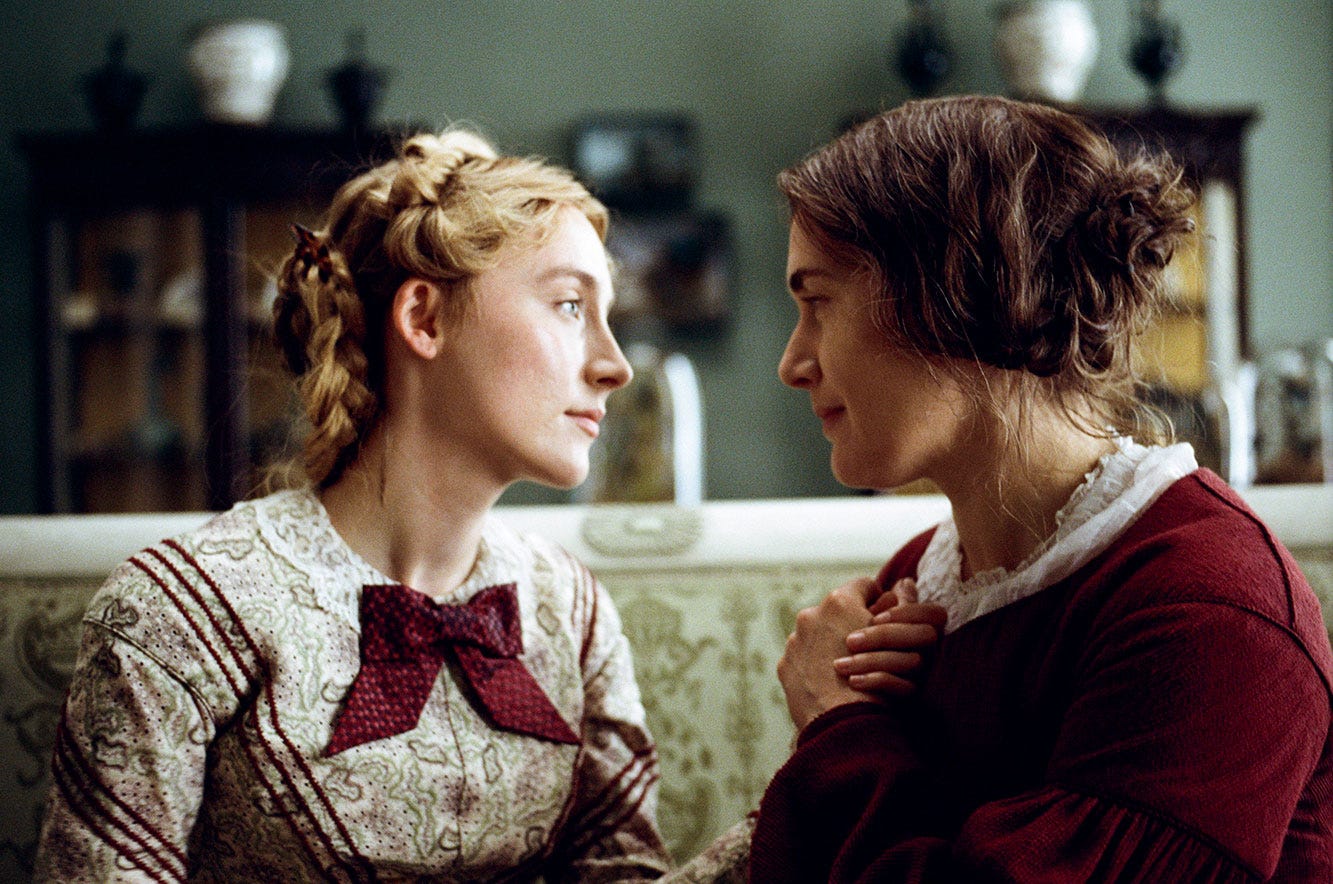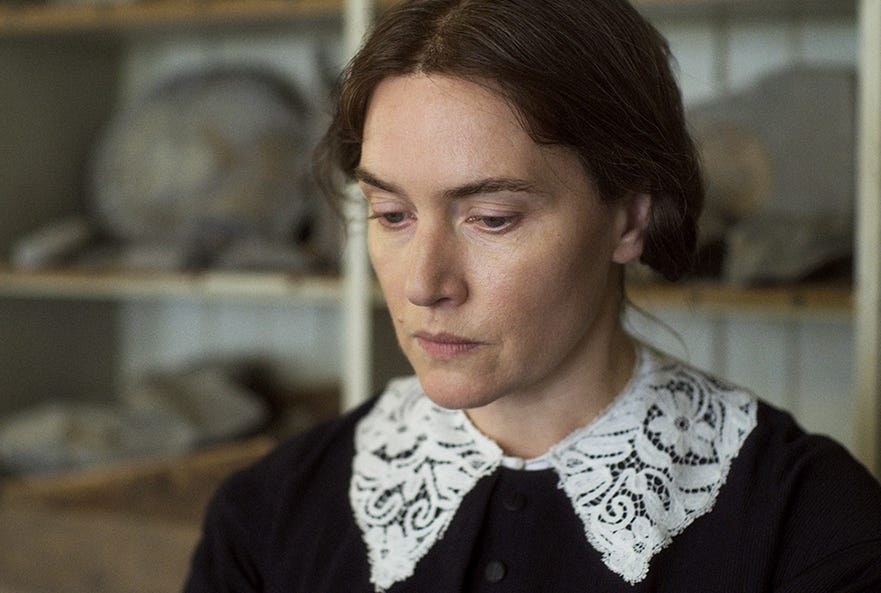ammonite
Film, 2020
Mary Anning was a woman for whom critical recognition came too late to be meaningful in her life. She was poor, passionate, committed, and by all historical reports, compassionate and kind. She lived her life isolated in her small house in coastal England in Lyme Regis. She lived battered by the elements, and died relatively young of breast cancer at 47, only to have the male-driven scientific community finally acknowledge her enormous contributions long after she passed.
I can see why Francis Lee considered her life rich dramatic fodder. Ammonite is a film that not only explores female intimacy, but looks long and hard at the sacrifices women are prepared to make to achieve their life’s work – characteristics that history would tell us belonged only to men. (Please see my rant on Mary and George for “History was written by men, it’s time we took it back.”)
Kate Winslet is the most gifted, important actress of her (and my) generation. I’m willing to fight for that statement. Here she’s steely, stubborn, and prideful, but utterly free from artifice. Saoirse Ronan has a luminosity that reveals itself in endless layers. To have these actresses so immersed and committed here isn’t just important to the film, it is the film. Without their talent for communicating thoughts and feelings without words, we would have a windy, somewhat dour film about a couple of women in corsets clambering around on rocks who had a fling.
Actually, that’s what a lot of people thought this was. I really disagree.
Ammonite is beautifully shot, with a sparse script. There isn’t much to the story itself – Mary Anning is an under-appreciated but noteworthy scientist. She lives off the pittance tourists will pay for meaningless fossils, while she hunts for the real thing and cares for her ailing mother (Gemma Jones). Charlotte arrives with her fossil-hunting husband, depressed and haunted after what we assume is the most recent of many miscarriages. He leaves to pursue adventures, offering Mary money she can’t afford to turn down to take care of his wife while he is away.
Charlotte becomes seriously ill, and while Mary is forced to nurse her she begins to emerge from her isolation, finding something in the guileless Charlotte that makes her hope for more from her existence than simply rocks, mud, fossils, and loneliness.
Despite both Mary Anning and Charlotte Murchison being historical figures, Ammonite is a work of pure fiction. Yes, Anning was an important geologist and paleontologist. Yes, Murchison was the beautiful wife of a rich man interested in fossils. That’s pretty much it. There’s no biographical evidence to suggest Anning was gay or straight. There is evidence they were friends of a sort. All we know for sure is that she was brilliant, and alone.
Francis Lee has chosen to make Mary a lesbian – this affair isn’t entirely a by-chance coming together of forbidden passions, Mary has been in at least one other relationship, with her neighbor Elizabeth Philpot (Fiona Shaw). It’s Elizabeth who helps Mary to see how vital Charlotte has become to her by recounting the real reasons why their own romance unhappily failed.
Mary sees the beauty and fragility of Charlotte from the first moment, though at first despises those things before she comes to love them. Charlotte is brave but embattled, and often childlike in her helplessness. She becomes caught up in her passions and life-changing revelations, unable to really see Mary for who she truly is until literally the last second of the film.
Ammonite’s filmmaking is flawed. There are definitely some pacing issues in the first half, and tighter editing throughout would have kept different sections from dragging. Winslet needs that time early on to fully reveal Mary to us. However, Lee does indulge himself, wanting to impress upon us the truly bleak drudgery of her existence - in the house, on the shore, scraping fossils in the shop, in the Annings’ sparse rituals of cleaning old keepsakes and making their meagre meals. In order to fully appreciate the light Charlotte brings, we have to truly immerse in Mary’s dark. It’s slow, but ultimately rewarding.
Ammonite truly captured me in one small moment. Mary struggles home after a night of social anxiety and jealousy where she cannot bring herself to mingle with the elite of her small town, but Charlotte was born for it. Charlotte counters by saying, “you were the most fascinating person there tonight, and the most beautiful”. Ammonite might not be explosive, but it was rich, and honest. If you enjoy period pieces that take their time, you’ll be engrossed spending a couple of hours in her company.
Last Note: Films that explore being an overlooked, creative woman are not that uncommon. However, films that explore that experience while also illuminating the love between women are rare enough that having two come close together (Ammonite and Portrait of Lady on Fire) sent the film world into a tizz. The films have little in common, and comparisons between them are redundant, though every single - usually male - review you read can’t avoid mentioning one without the other and comparing them, with this one coming out as the loser. Ignore it, see both. They’re both wonderful in their own ways.




